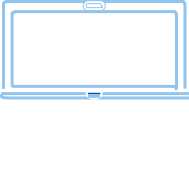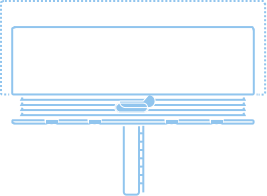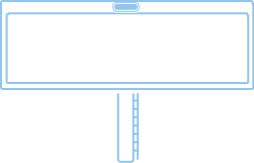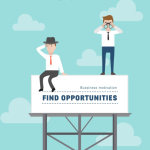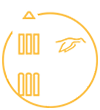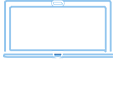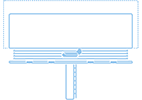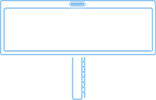Simple Tips for Designing an Effective Indianapolis Billboard Ad
So, you’re thinking about putting your business on a billboard in Indianapolis? Great call!
This city’s perfect for it—packed with drivers on highways like I-465, busy streets downtown, and folks heading to big events at the Speedway or Lucas Oil Stadium. A well-placed Indianapolis billboard can put your brand in front of thousands of eyeballs every day.
But here’s the thing:
That huge sign only works if it’s designed right. You’ve got seconds—maybe less—to grab attention. People aren’t slowing down to read it. They’re driving 65 mph, changing lanes, or stuck in traffic. Your message needs to hit hard and fast.
Billboards aren’t like flyers or websites.
Forget tiny details or long paragraphs. This is about instant impact. Think: big, bold, and stupid-simple. If people squint, get confused, or need more than 3 seconds to “get it,” you’ve lost them.

Why Indy’s roads are special (and tricky):
- Highways rule:I-465 (the loop), I-70, I-65—these are billboard hotspots, especially near exits like Castleton or Speedway.
- Busy streets:Washington St., Michigan Rd., Meridian—crawling with local traffic daily.
- Event zones:Near the Stadium, Airport, or the 500 track? Huge crowds (but only sometimes).
- Digital’s taking over:Fancy new screens let you change ads fast… but they still need to be super
- Speed kills (your message):Indy drivers move quick. Blink, and your ad’s in their rearview.
This environment demands a design strategy built for speed and clarity. Here’s how to nail it:
Tip 1: Master the 6-Second Rule (The Golden Rule!)
Imagine driving 65 mph on I-465. How long do you actually look at a billboard? Studies show it’s often less than 6 seconds. That’s your entire window. Your design must respect this.
- What it Means:Your core message needs to be understood instantly. If it takes longer than 6 seconds to “get it,” you’ve lost them.
- Action:Ruthlessly edit your message. What is the one thing you want people to remember? Your brand name? A killer offer? A new location? Make that the hero.
Tip 2: Words? Less is Always More
This is arguably the hardest rule for businesses to follow. The urge to cram in phone numbers, addresses, website URLs, a list of services, and a catchy slogan is strong. Resist!
- The Magic Number:Aim for 6 words or less on your main message. Seriously.
- Why:More words = smaller text = harder to read = ignored message. Drivers simply cannot process paragraphs while navigating Indy traffic.
- Action:
- Static Billboards:Stick to your ultra-short headline, your logo, maybe a very simple website (if it’s super memorable, like “IndyAuto.com”) or a basic phone number (only if it’s incredibly easy like “555-CARS”). Avoid street addresses.
- Digital Billboards:You have a little more flexibility because you can run multiple messages in a rotation. But each individual slide should still follow the 6-word rule. Think of each slide as its own mini-billboard.
Tip 3: Fonts – Go BIG or Go Home
Tiny, skinny, or fancy fonts? They’ll murder your billboard’s impact. Zero debate.
Why?
Drivers need to read it from 500+ feet away, often while speeding. If they squint, you lose.
Keep it stupid-simple:
- Pick “Blocky” Fonts:Use clean, thick fonts like Arial, Impact, or Helvetica. Skip anything with fancy curls or “feet” (like Times New Roman) – they blur into mush from far away.
- Make it THICK:Bold or extra-bold only. Thin fonts vanish on the highway.
- Size is EVERYTHING:Your text should look ridiculously huge on your computer screen. If you think, “Whoa, that’s massive!” – it’s probably just right for the road.
- Colors Must POP:Light text on dark, or dark text on light. Never do similar shades (like blue-on-blue). Think: bright yellow on navy, white on black, or red on white. Slam-dunk contrast.
Tip 4: One Killer Image – Not a Photo Dump
Your picture is your hook. It’s gotta scream your message in half a second.
Rules for winning visuals:
- ONE Image Only: No collages, no busy scenes, no “and-also-this” extras. One. Big. Visual.Complexity = confusion at 65 mph.
- Make it OBVIOUS:The image should instantly connect to what you do.
- Selling pizza? Show a giant, cheesy slice.
- Plumbing company? Use a simple wrench iconor faucet.
- Car dealership? One sharp photo of your hottest car.
- Backgrounds: Keep ‘Em Calm:Solid colors or soft blurs work best. Don’t let the background fight with your message. If it distracts, nix it.
Tip 5: Your Logo – Be Seen, Not a Scene-Stealer
People need to know the ad’s from YOU… but your logo shouldn’t hog the spotlight.
How to nail it:
- Show it – But Shrink the Ego:Place your logo where it’s visible (usually a corner), but don’t let it dominate. Your main message and image are the heroes.
- Size it Right:Big enough to recognize, small enough to stay humble. Bottom corners often work great.
- Be On-Brand:Use your normal colors. Consistency helps folks remember you.
- Think of it Like a Nametag:It tells people who’s talking – it’s not the whole conversation.
Tip 6: Call to Action? Make it Simple & Realistic (If You Use One)
Do you need a call to action (CTA) on a billboard? Sometimes yes, often the brand awareness is enough. But if you do use one:
- Keep it Ultra-Simple:“Visit Today,” “Call Now,” “Sale Ends Soon.”
- Make it Memorable & Easy:If you include a phone number, make it SUPER simple (e.g., 317-GET-COFFEE). If it’s a website, make it incredibly short and relevant (e.g., “IndyPizza.com” – not your full corporate site URL). Avoid tiny URLs or complex phone numbers.
- Digital Advantage:Digital billboards are better suited for CTAs because you can display a phone number or URL on one slide, and the next slide can reinforce the brand. But still keep it simple per slide.
Tip 7: Think Like an Indianapolis Driver (Location Matters!)
A billboard on the curvy, high-speed stretch of I-465 near the northeast side faces different challenges than one on Meridian St. downtown during rush hour.
- Traffic Flow:Is the audience speeding by? Crawling in traffic? Tailor slightly. More text might be slightly more tolerable in heavy congestion, but don’t push it. Speed still rules.
- Viewing Angle & Distance:How far back will drivers first see the board? Is it on a curve? Work with your billboard company to understand the specific sightlines of your chosen location. This might influence font size and layout.
- Local Flavor (Subtly):While not always necessary, imagery that subtly resonates with Indy (think skyline silhouette, checkered flag, subtle references to local landmarks) can create a subconscious connection. Don’t force it, though. Clarity trumps cleverness.

Tip 8: Digital vs. Static – Know the Difference
- Static Billboards:Your design is fixed for weeks or months. It must be timeless and weather-resistant (ensure colors don’t fade badly). Absolute simplicity is paramount.
- Digital Billboards:Your ad rotates with others (usually every 6-10 seconds). This offers flexibility:
- Multiple Messages:Run different offers or highlight different products/services in a sequence. BUT, each slide must still stand alone and be instantly understandable. Design each slide as if it’s the only one a driver might see.
- Motion:Simple, subtle animations (like a logo gently pulsing or text sliding in) can grab attention, but avoid complex, distracting animations that take too long to resolve or cause readability issues. Less is more with motion.
- Timeliness:Promote time-sensitive offers or events effectively.
Tip 9: Test Before You Invest (Seriously!)
Don’t just approve the design on your laptop screen. That’s a recipe for disaster.
Action:
-
- Print it Poster Size:Print your design at a smaller scale (like 11×17 or even larger if possible).
- Step WAY Back:Pin it to a wall and walk across the room (at least 20-30 feet).
- Glance Quickly:Literally glance at it for 2-3 seconds as you walk by. What did you see? What did you remember?
- Squint:Does it still hold up? Can you read the text?
- Ask Others:Get fresh eyes. Can they grasp the message instantly from a distance?
- Digital Simulation:If it’s for a digital board, mock up the rotation on a screen and view it briefly from across the room.
Tip 10: Partner with Your Billboard Company
Reputable Indianapolis billboard companies (like Lamar, Outfront, or local independents) have seen thousands of ads succeed and fail. They know their specific boards and locations intimately.
- Action: Share your draft design with them. Ask for feedback based on the specific location you’re renting. They can offer invaluable insights on readability, local conditions, and what tends to work best on their inventory. They want your ad to succeed too!
Wrap-Up: Keep It Simple, Indy!
Designing a killer billboard isn’t about being fancy. It’s about cutting the fluff and making your message unmissable in seconds. Remember:
→ Fewer words.
→ Bigger fonts.
→ One killer image.
→ Your logo—visible but humble.
Get these right, and your billboard won’t just blend into I-465 traffic—it’ll grab eyes, stick in minds, and pull folks straight to your business.
Stuck? Overthinking it?
We get it. Billboard design feels high-stakes (because it is!). If you want a pro to help simplify your message, maximize impact, and avoid costly mistakes…
Talk to Reagan Billboard.
We’re local Indy experts. We know these highways, these drivers, and what makes a billboard work here. Let’s build you a sign that turns heads without slowing down traffic.
Your brand’s moment in the Hoosier spotlight starts now.



